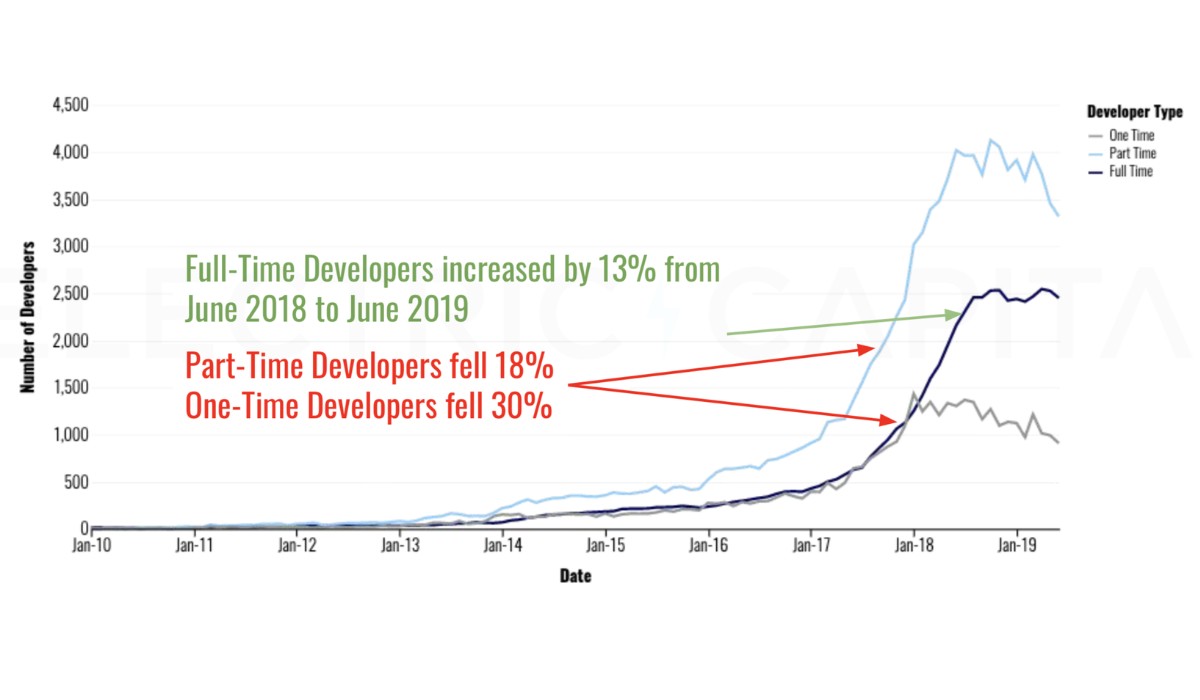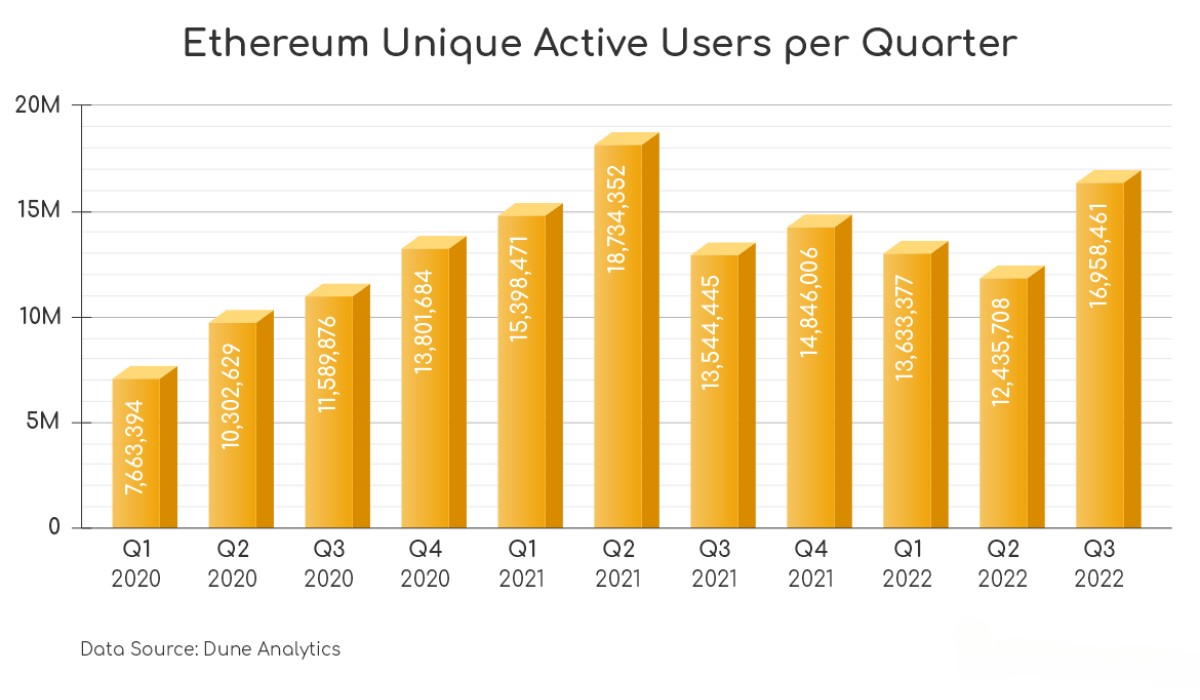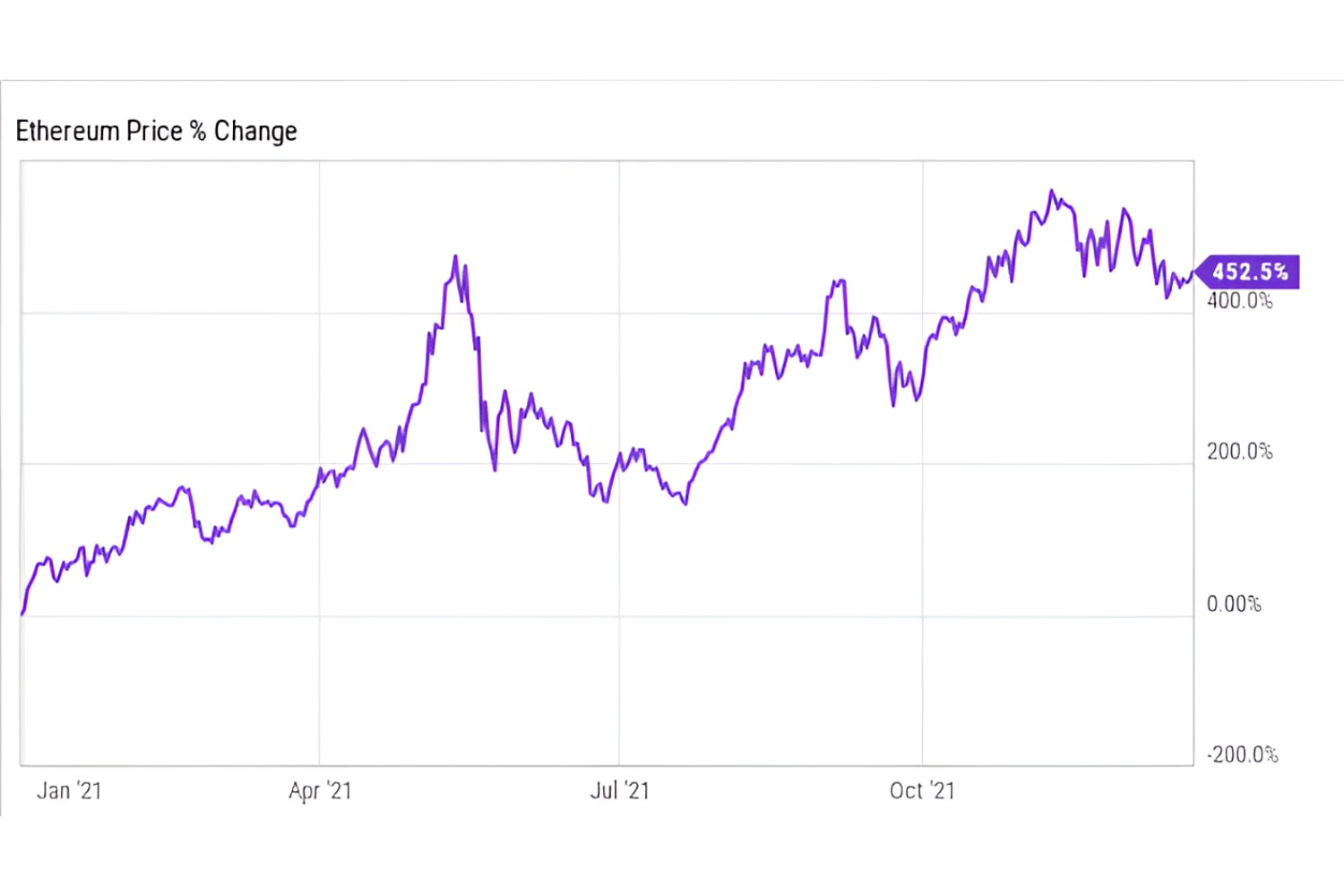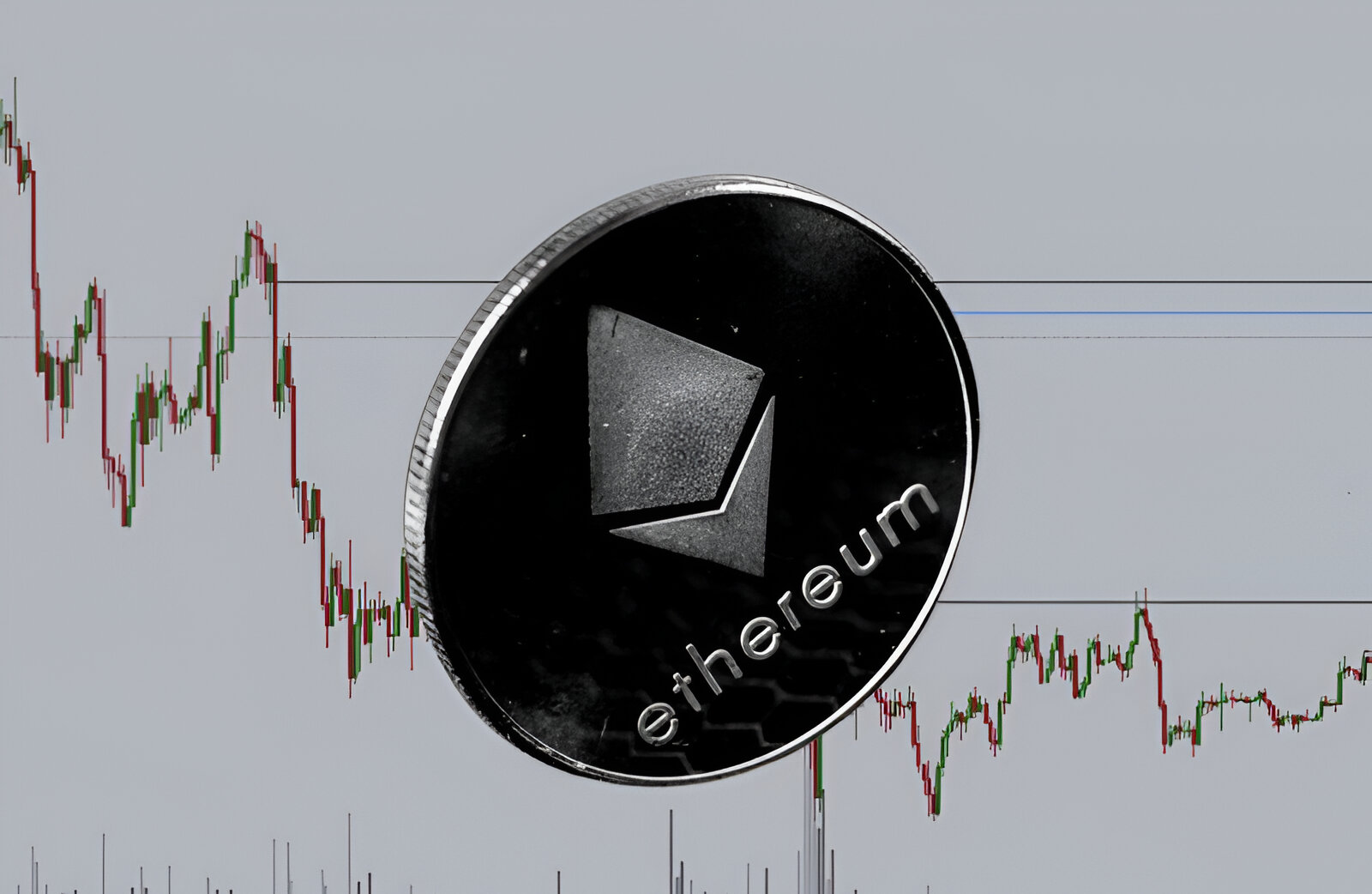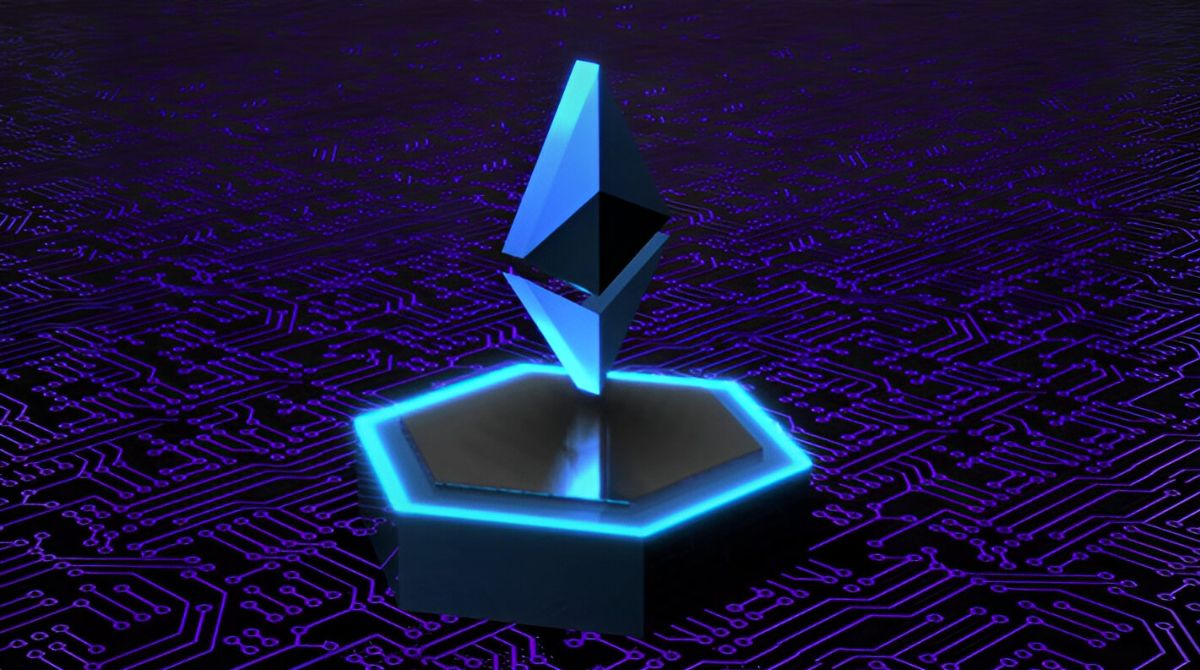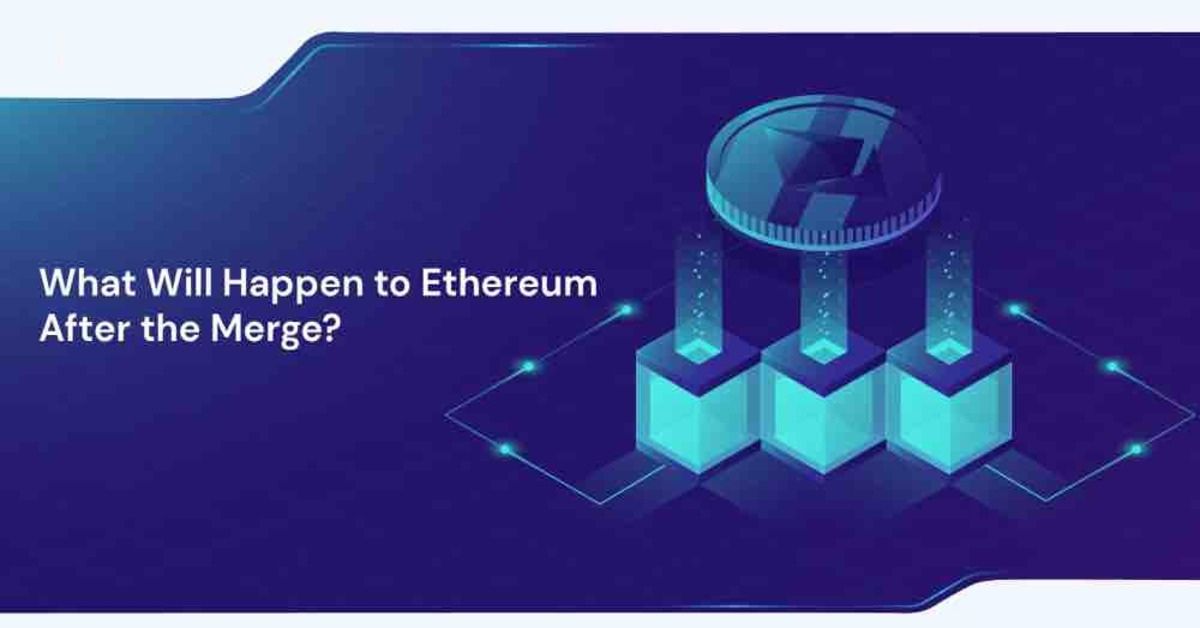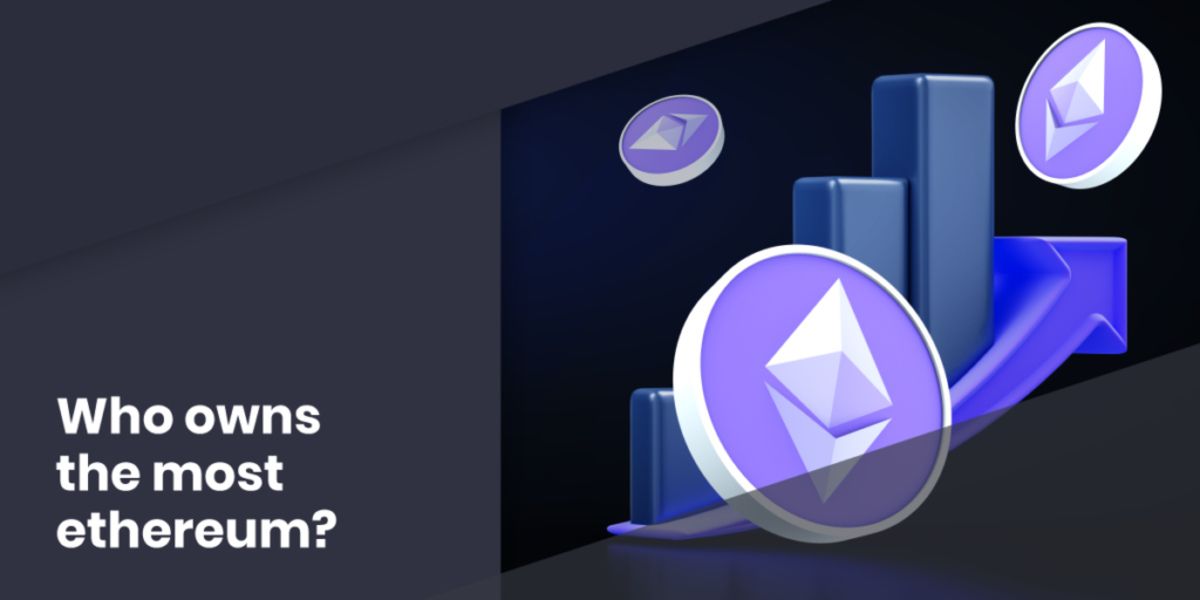Introduction
Ethereum, the pioneer of smart contract technology, has been experiencing remarkable growth since its inception. With its decentralized and programmable blockchain, Ethereum has become a breeding ground for innovation, attracting numerous developers from around the world.
In this article, we will delve into the world of Ethereum developers and explore the significance of their contributions. We will discuss the various initiatives taken by Ethereum to foster developer participation and examine the factors that make Ethereum an attractive platform for developers. Additionally, we will look at the number of active developers and the thriving developer ecosystem on Ethereum. However, before we dive into these aspects, let us first understand the rapid growth of Ethereum and its impact on the blockchain industry.
Ethereum, created by Vitalik Buterin in 2015, introduced the concept of decentralized applications (DApps) and smart contracts, revolutionizing the way we interact with blockchain technology. Unlike its predecessor, Bitcoin, Ethereum’s blockchain provides a platform for developers to build and deploy their own decentralized applications without the need for intermediaries.
Since its launch, Ethereum has gained immense popularity and has paved the way for countless innovations across various industries. Its flexibility and adaptability have made it an ideal platform for developing a wide range of applications, including decentralized finance (DeFi), non-fungible tokens (NFTs), and decentralized exchanges (DEXs).
The rise of Ethereum can be attributed to its vibrant and active developer community. Developers play a crucial role in advancing the Ethereum ecosystem by creating innovative applications, improving scalability, and advocating for the platform’s adoption. With their expertise and creative ideas, developers contribute to the growth and evolution of Ethereum as a leading blockchain platform.
To encourage developer participation, Ethereum has introduced several initiatives. These initiatives include development grants, hackathons, developer conferences, and educational resources. These efforts aim to support and nurture a thriving developer ecosystem that fosters collaboration and innovation.
In the following sections, we will explore the factors that attract developers to Ethereum, examine the number of active developers on the platform, and analyze the overall developer ecosystem. Let us now delve into the exciting world of Ethereum developers.
The Growth of Ethereum
Ethereum has experienced exponential growth since its launch, both in terms of its market value and its developer community. The platform has quickly become one of the most prominent players in the blockchain industry, revolutionizing the way we interact with decentralized applications and smart contracts.
One of the key factors driving the growth of Ethereum is its robust and scalable blockchain infrastructure. The Ethereum Virtual Machine (EVM) allows developers to execute smart contracts and build decentralized applications using Solidity, a programming language specifically designed for the platform. This flexibility and usability have attracted developers from various backgrounds, including software development, finance, gaming, and more.
The increased adoption and use cases of Ethereum have also contributed to its growth. With the rise of decentralized finance (DeFi), Ethereum has become the go-to platform for developers looking to create innovative financial applications such as lending protocols, decentralized exchanges, and yield farming platforms. The ability to program complex financial logic on the Ethereum blockchain has unlocked new possibilities, transforming traditional financial systems.
In addition to DeFi, Ethereum has been a driving force behind the explosion of non-fungible tokens (NFTs). Artists, creators, and collectors have flocked to Ethereum to tokenize digital assets, including artwork, collectibles, and virtual real estate. With the transparency and security provided by the blockchain, Ethereum has become the preferred platform for the creation, trading, and ownership of NFTs.
Furthermore, Ethereum’s scalability solutions, such as layer 2 protocols and Ethereum 2.0 (also known as Eth2 or Serenity), have addressed the platform’s scalability challenges. These upgrades allow for faster transaction processing, lower fees, and improved overall user experience. As a result, developers are confident in Ethereum’s ability to handle larger user bases and more complex applications, further fueling its growth.
Another significant factor in the growth of Ethereum is the strong community support behind the platform. Ethereum has a robust network of developers, enthusiasts, and stakeholders who actively contribute to its development and promotion. The open-source nature of Ethereum encourages collaboration, peer review, and continuous improvement, making it a truly community-driven project.
The growth of Ethereum has not gone unnoticed by the wider blockchain and financial industries. Many prominent companies, including major financial institutions, tech giants, and venture capitalists, have recognized the potential of Ethereum and are actively investing in its further development. This influx of resources and expertise further fuels the growth of the platform and affirms its position as a leading force in the blockchain space.
As Ethereum continues to mature and evolve, its growth trajectory shows no signs of slowing down. With its focus on innovation, scalability, and community engagement, Ethereum is poised to maintain its position at the forefront of the blockchain industry for years to come.
Importance of Developers
Developers play a crucial role in the success and growth of any technology platform, and Ethereum is no exception. In fact, developers are the driving force behind Ethereum’s thriving ecosystem and its continuous evolution. Their contributions are instrumental in enhancing the functionality, security, and usability of the platform.
One of the primary reasons why developers are so important to Ethereum is their ability to design and build decentralized applications (DApps) and smart contracts. These applications and contracts are the building blocks of the Ethereum ecosystem, enabling a wide range of functionalities and use cases. Developers leverage their technical skills and creativity to create innovative solutions that address real-world problems.
Developers also contribute to the advancement of Ethereum by improving the platform’s scalability and performance. As more users and applications adopt Ethereum, the network must be able to handle increased transaction volume and computational demand. Through research, optimization, and implementation of new protocols, developers help enhance Ethereum’s scalability, making it more efficient and accessible to a larger user base.
In addition to technical contributions, developers also play a crucial role in advocating for Ethereum’s adoption and educating the community. They create tutorials, documentation, and educational resources that empower others to understand and utilize the platform effectively. By sharing their knowledge and expertise, developers foster a vibrant and supportive community that drives the growth and adoption of Ethereum.
The importance of developers also extends to the security of the Ethereum ecosystem. With significant value being stored and transacted on the platform, it is crucial to ensure robust security measures. Developers actively contribute to the identification and resolution of vulnerabilities, helping to protect users’ assets and maintain the integrity of the platform. Their expertise in code auditing, penetration testing, and security best practices ensures that Ethereum remains a secure and trusted platform.
Furthermore, developers are instrumental in shaping the future of Ethereum through research and innovation. As new technologies and trends emerge, developers explore their potential applications within the Ethereum ecosystem. This forward-thinking approach drives the evolution of Ethereum, enabling it to adapt to changing market demands and remain at the forefront of the blockchain industry.
Ultimately, developers are the backbone of the Ethereum community, providing the technical expertise and creativity necessary to propel the platform forward. Their contributions drive innovation, enhance security, and foster widespread adoption. Without the dedicated efforts of developers, Ethereum would not have achieved its current status as one of the most influential and promising blockchain platforms in existence.
Developer Initiatives
Ethereum recognizes the importance of developers and actively encourages their participation through various initiatives. These initiatives aim to support, incentivize, and empower developers to contribute to the growth and innovation of the Ethereum ecosystem.
One of the key initiatives by Ethereum is the provision of development grants. Ethereum Foundation and other organizations provide financial support to developers working on projects that showcase technical excellence and promote the advancement of Ethereum. These grants enable developers to focus on their projects without worrying about financial constraints.
Ethereum also organizes hackathons, which are events where developers come together to collaborate, learn, and build innovative applications using Ethereum’s technology. Hackathons provide a platform for developers to showcase their skills, receive mentorship from experts, and explore new ideas. These events help foster a spirit of innovation and encourage developers to push the boundaries of what is possible on the Ethereum platform.
Furthermore, developer conferences such as Devcon are organized to bring the Ethereum community together. These conferences provide a platform for developers, researchers, and industry leaders to network, share knowledge, and discuss the latest developments in the Ethereum ecosystem. Devcon offers a unique opportunity for developers to gain insights, learn from the experiences of others, and contribute to the ongoing dialogue about the future of Ethereum.
In addition to financial support and events, Ethereum provides a wealth of educational resources for developers. From documentation to tutorials and online courses, developers have access to a comprehensive library of materials that help them understand the intricacies of Ethereum’s technology and guide them in building their applications. These resources empower developers and facilitate the learning process, ensuring that they have the necessary knowledge and skills to leverage Ethereum effectively.
Moreover, platforms such as Gitcoin and Ethereum Community Fund offer bounties and grants for developers to work on open-source projects related to Ethereum. These initiatives incentivize collaboration and contribute to the open-source nature of Ethereum. Developers are encouraged to contribute to the development of Ethereum core protocols, decentralized applications, and community-driven projects through bounties and grants.
Overall, these developer initiatives by Ethereum foster a supportive ecosystem and encourage active participation from developers. By providing financial support, organizing events, offering educational resources, and incentivizing collaboration, Ethereum empowers developers to push the boundaries of what is possible on the platform and contributes to the continuous growth and innovation of the Ethereum ecosystem.
Factors Attracting Developers to Ethereum
Ethereum has emerged as a preferred platform for developers due to several factors that make it an attractive choice. These factors contribute to the platform’s growth, innovation, and widespread adoption among the developer community.
One of the main factors attracting developers to Ethereum is its robust and flexible smart contract functionality. With Ethereum, developers have the ability to write complex, self-executing smart contracts that can automate various processes and transactions. The Ethereum Virtual Machine (EVM), along with the solidity programming language, provides developers with a powerful and versatile platform to create decentralized applications (DApps) that can revolutionize industries such as finance, gaming, supply chain, and more.
Ethereum’s thriving developer community is another key attraction. The Ethereum community is vibrant and supportive, consisting of experienced developers, passionate enthusiasts, and industry leaders. The availability of resources, documentation, and educational materials provides a strong foundation for developers to learn and grow within the Ethereum ecosystem. The collaborative nature of the community fosters knowledge sharing and helps developers stay up-to-date with the latest advancements in Ethereum technology.
Another compelling factor is the vast number of use cases and applications that can be built on Ethereum. From decentralized finance (DeFi) protocols to non-fungible token (NFT) marketplaces, gaming platforms, and decentralized exchanges (DEXs), Ethereum provides developers with a wide range of opportunities to explore their creativity and build innovative solutions. This diversity of use cases not only attracts developers but also ensures that Ethereum remains a dynamic and evolving platform.
The scalability solutions being developed for Ethereum, such as layer 2 protocols and Ethereum 2.0 (Eth2), also contribute to its appeal among developers. These solutions aim to address the scalability and transaction speed constraints that Ethereum currently faces. With the successful implementation of these upgrades, developers can unlock new possibilities by building highly scalable applications on Ethereum, making it more attractive for developers working on projects that require faster transaction processing and higher throughput.
Furthermore, Ethereum’s interoperability with other blockchains and its compatibility with popular development frameworks are additional factors that attract developers. Ethereum’s compatibility with tools and technologies that developers are already familiar with, such as Web3.js and Truffle, simplifies the development process and reduces the learning curve for building applications on Ethereum. The ability to connect and interact with other blockchains through interoperability standards like the ERC-20 and ERC-721 token standards also expands the possibilities for developers in terms of integration and collaboration.
Lastly, the potential for financial rewards is another motivating factor for developers to choose Ethereum. With the growth of decentralized finance (DeFi) and the widespread adoption of cryptocurrencies, developers have the opportunity to create applications that can generate revenue, whether through transaction fees, protocol tokens, or crowdfunding mechanisms. The financial incentives associated with building successful projects on Ethereum further attract developers to explore and innovate within the ecosystem.
Overall, the robust smart contract functionality, supportive community, diverse use cases, scalability solutions, compatibility with development frameworks, and potential financial rewards make Ethereum an appealing platform for developers. These factors contribute to the continuous growth, innovation, and adoption of Ethereum within the developer community.
Number of Active Developers on Ethereum
The Ethereum ecosystem boasts a thriving and rapidly growing community of developers who actively contribute to the platform’s development and expansion. The number of active developers on Ethereum is a testament to its popularity and the high level of interest surrounding its technology.
Measuring the exact number of active developers on Ethereum is a challenging task since developers can contribute in various ways, including code contributions, community engagement, and participation in hackathons and development competitions. However, several indicators provide insights into the size and vibrancy of the developer community.
One such indicator is the number of repositories and projects hosted on platforms like GitHub that are related to Ethereum development. GitHub, as a popular code-sharing platform, serves as a hub for developers working on Ethereum-related projects. The sheer number of active repositories and projects dedicated to Ethereum highlights the widespread involvement of developers in the ecosystem.
Another indicator of the active developer community on Ethereum is the participation in hackathons and coding challenges. These events attract developers from various backgrounds who come together to build innovative applications and solutions using Ethereum’s technology. The high levels of participation in these events reflect the enthusiasm and engagement of the developer community.
The Ethereum Foundation itself and other organizations within the Ethereum ecosystem also play a significant role in supporting developers and fostering a vibrant developer community. These organizations offer grants, scholarships, and funding opportunities to developers working on Ethereum-related projects. The existence of such initiatives indicates the growing interest among developers and the overall size of the active developer community on Ethereum.
Additionally, community-driven initiatives, such as online forums and discussion platforms dedicated to Ethereum development, also serve as indicators of the number of active developers. These platforms provide spaces for developers to connect, seek assistance, and share knowledge and experiences related to Ethereum development. The high levels of engagement and participation on these platforms suggest a substantial number of developers actively working on Ethereum.
While it is challenging to provide an exact figure for the number of active developers on Ethereum, all these indicators point to a large and vibrant community of developers. The continuous growth in the number of repositories, the participation in hackathons, the support and initiatives from organizations, and the active engagement on community platforms highlight the substantial presence of developers within the Ethereum ecosystem.
As Ethereum continues to evolve, it is expected that the number of active developers will continue to increase. With the platform’s ongoing development and the increasing interest in blockchain technology, Ethereum presents an attractive opportunity for developers to contribute to the advancement of decentralized applications, smart contracts, and innovative solutions within the blockchain industry.
Developer Ecosystem of Ethereum
The developer ecosystem of Ethereum is a dynamic and thriving community that plays a crucial role in the growth and innovation of the platform. This ecosystem consists of a diverse range of developers, organizations, and resources that collectively contribute to the development and advancement of Ethereum-based applications and infrastructure.
One of the key components of the developer ecosystem is the Ethereum Foundation. The Ethereum Foundation is a nonprofit organization that supports the development of the core Ethereum protocol and provides grants to projects and developers working on Ethereum-related initiatives. The foundation’s active involvement ensures the continuous improvement, security, and scalability of the Ethereum network.
Besides the Ethereum Foundation, there are various other organizations within the ecosystem that actively contribute to the developer community. These organizations offer funding, mentorship, and technical resources to support developers in their Ethereum-based projects. They play a vital role in nurturing and growing the developer community by providing opportunities for collaboration and innovation.
The developer ecosystem of Ethereum is further enriched by the availability of a wide range of development tools, frameworks, and libraries. These resources simplify the process of building decentralized applications (DApps) and smart contracts on Ethereum. Frameworks like Truffle and tools like Ganache provide developers with a seamless development environment, allowing them to easily test, deploy, and interact with their Ethereum applications.
Moreover, Ethereum benefits from a robust and active community of developers. Online forums, discussion platforms, and social media groups dedicated to Ethereum provide spaces for developers to connect, collaborate, and seek assistance. These community-driven platforms foster knowledge sharing, problem-solving, and the exchange of ideas, contributing to the overall growth and learning within the Ethereum developer community.
Another significant aspect of the developer ecosystem is the availability of educational resources. Documentation, tutorials, and online courses provide aspiring Ethereum developers with the necessary knowledge and skills to get started. These resources cover topics such as smart contract development, DApp architecture, security best practices, and more. Educational initiatives contribute to the inclusivity and accessibility of the Ethereum ecosystem, attracting developers from diverse backgrounds and levels of expertise.
Furthermore, hackathons, coding competitions, and developer conferences serve as pivotal events within the developer ecosystem. These events provide developers with an opportunity to showcase their skills, learn from experts, and collaborate with peers. Hackathons, in particular, foster innovation and encourage developers to build creative and impactful solutions, accelerating the pace of development within the Ethereum ecosystem.
Overall, the developer ecosystem of Ethereum is characterized by a strong community, supportive organizations, accessible resources, and collaborative platforms. It is this ecosystem that fuels the continuous development and growth of Ethereum, making it an attractive platform for developers seeking to leverage blockchain technology and create innovative decentralized applications.
Challenges and Competition
Although Ethereum has established itself as a leader in the blockchain space, it faces various challenges and competition that impact its developer ecosystem and overall growth.
One of the primary challenges Ethereum faces is scalability. As the number of users and the complexity of applications on the platform increase, scalability becomes a critical issue. The current limitations of the Ethereum network, including transaction throughput and high fees during periods of network congestion, pose challenges for developers building applications that require high transaction volume or real-time interactions. However, Ethereum’s ongoing development of scalability solutions, such as layer 2 protocols and Ethereum 2.0, aims to address these challenges and improve the scalability of the platform.
Another challenge is the constant need for security measures. Ethereum-based applications are prone to vulnerabilities and attacks, which can result in significant financial losses for users. Developers must be vigilant in identifying and mitigating security risks to ensure the safety of user funds and the overall credibility of the platform. The Ethereum community, along with security audits and best practices, strives to address these concerns and enhance the security of Ethereum-based applications.
Furthermore, competition in the blockchain industry presents a challenge for Ethereum. Numerous blockchain platforms, such as Polkadot, Solana, and Binance Smart Chain, offer alternative solutions to developers. These platforms often emphasize scalability, interoperability, or niche use cases. As a result, developers have a wider range of options when choosing where to build their applications. Ethereum must continue to innovate and improve to remain competitive and retain its position as the platform of choice for developers.
Interoperability is also an area of both challenge and competition. Interoperability allows different blockchain networks to communicate and share data, enabling developers to leverage the strengths of multiple platforms. Ethereum faces competition from blockchain networks that offer native interoperability features, allowing developers to seamlessly connect and interact between blockchains without relying on intermediary solutions. Ethereum is embracing this challenge by exploring cross-chain bridges and interoperability protocols, aiming to maintain its compatibility and connectivity with other blockchains.
Moreover, developer education and onboarding present a challenge for Ethereum. While the platform offers a wealth of educational resources, the learning curve for new developers can still be steep. The complexities associated with smart contract programming and blockchain concepts may deter some developers from working on Ethereum-based projects. Simplifying the development process and providing more accessible educational materials can help overcome this challenge and attract more developers to the Ethereum ecosystem.
Despite these challenges and competition, Ethereum remains a dominant and influential force in the blockchain industry. The Ethereum community, along with ongoing development efforts, collaboration, and continuous improvement, is actively addressing these challenges and striving to maintain Ethereum’s position as the premier blockchain platform for developers.
Conclusion
Ethereum’s growth and success can be attributed to several key factors, including the active developer community, robust smart contract functionality, diverse use cases, scalability solutions, compatibility with development frameworks, and potential financial rewards. These factors have made Ethereum an attractive platform for developers, fostering a vibrant developer ecosystem that drives innovation and growth within the blockchain industry.
The Ethereum developer community is a vital component of the platform’s success. Their contributions, whether through code development, community engagement, or educational initiatives, shape the evolution and advancement of Ethereum. The Ethereum Foundation and other organizations within the ecosystem support developers through grants, funding opportunities, and events, further encouraging engagement and collaboration.
Ethereum’s developer ecosystem is enriched by the availability of development tools, frameworks, and libraries that simplify the creation of decentralized applications and smart contracts. Educational resources and community-driven platforms ensure that developers have the knowledge and support needed to build on Ethereum. Hackathons, coding competitions, and conferences serve as catalysts for innovation and collaboration.
However, Ethereum also faces challenges and competition. Scalability, security, interoperability, and developer onboarding are among the hurdles that Ethereum must overcome to maintain its position as a leading blockchain platform. Nevertheless, Ethereum’s ongoing development efforts, collaboration within the community, and continuous improvement demonstrate its commitment to addressing these challenges and remaining competitive.
In conclusion, Ethereum’s success as a blockchain platform is intrinsically linked to the active participation and contributions of its developer community. Their expertise, creativity, and dedication drive the growth, innovation, and adoption of Ethereum. With a vibrant developer ecosystem, Ethereum will continue to evolve and deliver transformative solutions that revolutionize industries and shape the future of decentralized applications.







